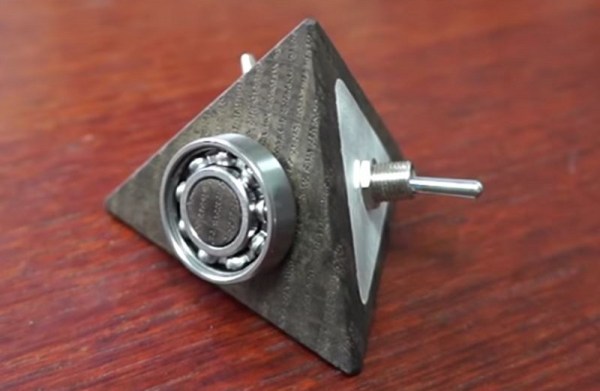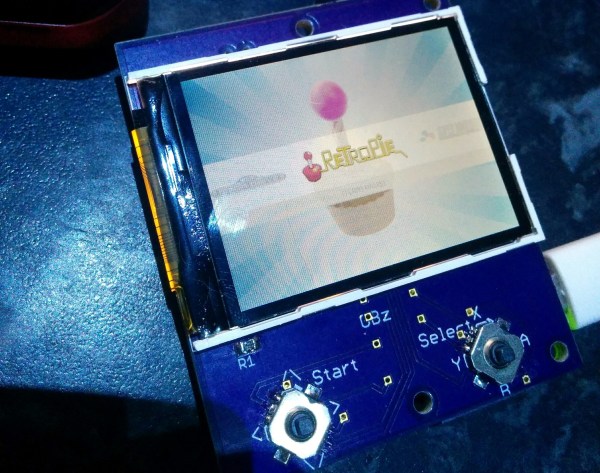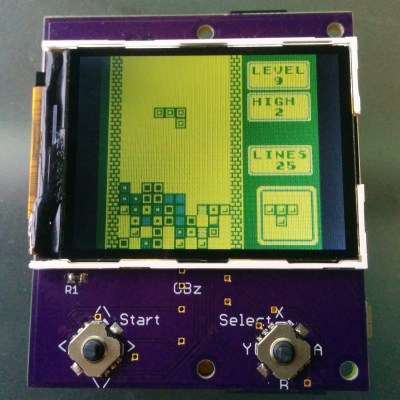Depending on whom you ask, fidgeting is an unsightly habit or a necessity for free-form ideation. Fan of the latter hypothesis? Well, why aren’t you making yourself a fidget pyramid?
[lignum] sculpted his fidget toy out of a chunk of 2000 year old bog-oak using hand tools and a little precision help from a Kuka KR 150 industrial robot arm. A push button, a toggle switch, a ball-bearing, and a smooth side provide mindless distraction on this piece.
Two plates of 1.5mm aluminium — also cut using the robot arm — are used to attach the button and toggle to the tetrahedron, while the ball bearing is pushed onto a cylindrical protrusion left during the cutting process for the purpose. The build video makes it look easy.
Continue reading “Fidget Pyramid With Help From A 2500 Pound Robot”



 This build is based on the Pi Zero and a 2.2″ (0.56 dm) ili9341 TFT display. This display has a resolution of 240×320 pixels, which is close enough to the resolution of the systems the Pi Zero can emulate. The Pi Zero and display are attached to a beautiful purple breakout board (
This build is based on the Pi Zero and a 2.2″ (0.56 dm) ili9341 TFT display. This display has a resolution of 240×320 pixels, which is close enough to the resolution of the systems the Pi Zero can emulate. The Pi Zero and display are attached to a beautiful purple breakout board (









